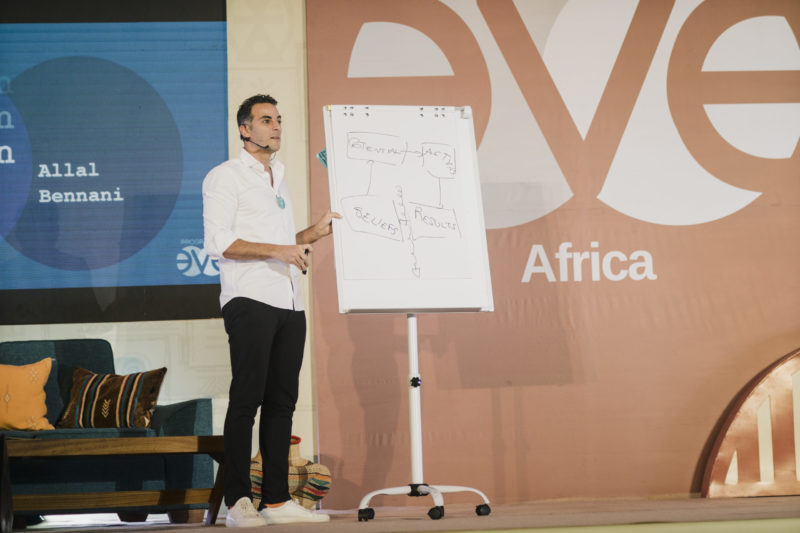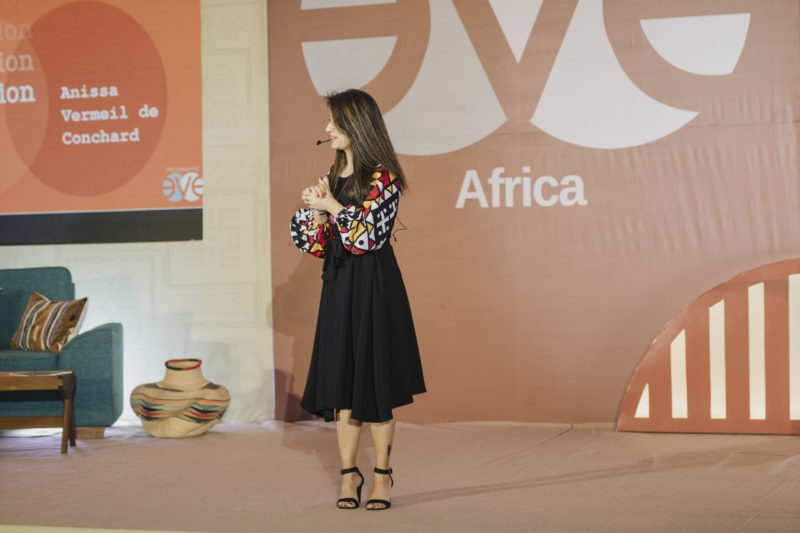We have two key issues on our agenda today: women and the environment, and we’re looking to see if there could be a connection between the two.
The approach taken by the ecofeminism movement interconnects the challenges of women’s empowerment with the challenges of environmental protection. But what is the ecofeminist movement really about? How did it get started? Who are its followers and figureheads? How does it make a difference? And what criticism has it drawn? The EVE webmagazine team takes a closer look.
1973-74: Garhwal-Paris – twin origins for eco-feminism
A militant pamphlet in Paris
The word “ecofeminism” was penned for the first time by the philosopher Françoise d’Eaubonne in her essay Le féminisme ou la mort (Feminism or death). Behind this radical title lay a prophecy of exactly what the world would become four decades later, with one climate catastrophe after another: natural resources depleting more quickly than they are forming, social issue tinderboxes, conflicts about access to land, water and forests, health challenges brought about by the relationship between humans and animals, the list goes on.
Eaubonne’s accusation is clear: the “phallocracy” is at fault (and actually coins the term during her accusation). She claimed that the recent history of organizations leaving women out of decision-making processes, and the industrialization that has exhausted both natural and human resources (especially women) has generated a dysfunctional economy and society which threaten the entire planet.
A peaceful disobedience eco-movement in India
Around the same time, five time zones east of Paris, illiterate villagers from the Indian region of Garhwal were launching the Chipko movement to protest against the government’s decision to back an industrial company in its move to build factories in their forests, even though a request for support to farm the land had recently been refused. These women decided to form a human barrier, standing hand in hand around the forest, to stop the felling of trees in the area where the company had planned to build its factories.
Their peaceful action paid off: the authorities put a stop to the industrial project and, after several years of talks, declared a moratorium on the felling of trees in several regions throughout India. Spurred on by this victory, the women of Garhwal brought a new dimension to the movement: they made themselves known to major NGOs, which began supporting their other environmental initiatives. They also started to focus on empowering each other.
Important symbolism
Arlington Women’s March
The ecofeminist movement also began picking up steam in English-speaking countries. In 1980, a group of women striving to promote gender equality and fighting against the nuclear arms race organized the important “Women and Life on Earth” conference.
A few months later, participants from this event met for the Women’s Pentagon Action: more than 2,000 women walked together to Arlington, where the US Department of Defense is headquartered. The demonstration started at the city cemetery where, symbolic burials were provided for women, such as those who have been made invisibile by the Matilda effect, victims of domestic violence, or even women who had been accused of witchcraft. They then headed for the Pentagon, which they surrounded by holding each other with scarves while chanting anti-war slogans, calling for measures to be taken against weapons, and denouncing the violent toys that are given to little boys from a very early age. They decorated the building with flowers, feathers and leaves and wove colored threads together to make canvases for the entrance hall, symbolizing the fact that all life is interconnected.
Greenham Common “Peace Camp”
On the other side of the Atlantic and a year later, around thirty Welsh women opposed NATO’s plan to install nuclear missiles at the military base of Greenham Common, and decided to set up a “peace camp” there. Hundreds of others soon joined them. During one of their initiatives in December 1982, 30,000 women surrounded the base. The following year, a new project brought together 10,000 women who formed a human chain spanning 20 km to connect Greenham with an armaments factory. Their number reached 50,000 a few months later for a protest against a delivery of nuclear weapons to the base. And several times a year, right up until 2000, they led initiatives to promote peace, environmental protection and women’s rights.
They were ridiculed at first, especially by the press, which reported that people found it strange that women who said they were fighting for the future of their children would rather join a protest than actually take care of their families at home! Later, they were criticized for illegal behavior. Then finally they started being considered as a community of marginalized people. They were again challenged in the 1990s by more mainstream pacifist and environmentalist movements who deemed their actions counterproductive and disruptive to the reconciliation between feminism and ecology.
Tension between ecofeminism and “universal” ecology
Things really started hotting up between ecofeminists and more universal ecologists at the end of the twentieth and during the early twenty-first century. There were various reasons for these clashes:
- The environmentalists believed it wasn’t suitable to take such a narrow approach to a planet-wide problem, especially considering that the activists were organized into single-sex groups. More pragmatically, they believed it wasn’t sensible to leave such a crucial challenge to just half of humanity, especially the half that people listen to the least.
- The eco-feminists felt somewhat dispossessed by the integration of environmental issues into institutional politics: the flourishing “green” parties were sometimes able to pick up a respectable number of votes in the elections, and make room for themselves during political debates… Even though they sometimes reproduced the glass ceilingwithin their own teams! It was frustrating for some of those early activists to see mostly male representatives speaking into microphones and taking up elected positions on the theme of ecology… Especially because various studies have shown that women are much better at protecting the environment on a daily basis.
- On the side of feminism which does not claim to be ecofeminism as such, some were worried that the purpose of defending the environment could threaten women’s rights: the contraceptive pill is often singled out for its indirect impact on aquatic ecosystems, sanitary protection is accused of polluting the environment, and the same applies to disposable diapers, users of which are stereotypically women… And the list goes on. The ecological impact of everyday actions weighs on the infamous mental load. Who is it that cooks “homemade” meals for her children, having taken care to buy quality, locally-sourced organic produce? Who remembers to take a recyclable bag on trips to the grocery store? Who recycles the waste? Who cares about washing clothes in cool water if they don’t need to be boil washed? Who organizes children’s birthday parties using bamboo straws, recycled paper plates (after weighing up the pros and cons of using and washing plates and cutlery with water that is heated using nuclear energy)? etc. For illustrator Emma, who popularized the idea of the “mental load“, as long as there is no progress in how we share out domestic tasks, women will be confined to the ecology of invisible “little things” and undervalued.
Revival of ecofeminism from 2015
The “first victims, first players” paradigm
After a period of marginalization, ecofeminism came back onto the public stage during Cop21, during which the UN decreed that one of the days (December 8, 2015) would be spent tackling the issue of gender equality within environmental issues. Experts, representatives from NGOs and personalities from the political and cultural worlds, came one after the other to join the debate and raise awareness about the countless inequalities generated by climate change which make women more vulnerable: they are taught to swim and climb trees less often than boys in certain regions of the world where tsunamis or gigantic floods are actually more likely to occur; they have poorer access to information, which means they would have less time to find adequate shelter; women are usually the single parent with children and are therefore less able to move around quickly and easily when they need to escape from danger. They are also 14 times more likely to die during natural disasters, estimates the UN. ONU Femmes France also highlights women’s increased risk from sexual assault and domestic violence during emergency situations such as natural disasters or health crises.
Climate change also has indirect, more unexpected, but frighteningly real effects such as an increase in the number of arranged marriages, according to Mac Bain Mkandawire, Executive Director of Youth Net and Counseling; when interviewed by Novethic. That’s because it’s difficult for parents to feed everyone, and sending daughters off to be married when crops fail means that people – and needs – are distributed between families.
Women are the first victims of climate change, but the last to be invited to take a seat at the table during discussions about the environment. The UN noticed that there were very few women representing countries at Cop21, so it issued a declaration demanding that they be better integrated, along the same lines as in resolution 1325, which was adoped in 2000 by the Security Council to step up women’s participation in discussions about conflicts and peace agreements, as well as to get them more involved in rebuilding and consolidation programs.
Women who change the world: environment and empowerment
Many initiatives led by women to help “save the planet” benefit from benevolent promotion in the form of financial and material support, skills sponsorship and media coverage to a greater or lesser extent. Grameen Bank founded by Muhammad Yunus, the NGO Ashoka, the Les Audacieuses program developed by La Ruche, the Danone Ecosystem Fund and others, all provide support for entrepreneurial projects that reap twin benefits: women’s empowerment and socio-environmental innovation.
For Hélène Conway-Mouret, who chairs the international sector of the Jean Jaurès foundation, the challenge is now to scale up these projects so that the women who run them can reap benefits that go beyond their elementary needs and those of their communities, while pooling and developing their ideas within the global economy. Her words also echo those of Nobel Laureate Esther Duflo on the dynamics between women’s empowerment and economic development: while social innovation is widely supported by women around the world, it is not possible to channel funding into solutions with only moderate ambition. This also mirrors the work of the other female recipient of the Nobel Prize in Economic Sciences, Elinor Ostrom, who believed that the ultimate “common good” is the environment, with inclusive sharing of its resources.
Marie Donzel, for the EVE webmagazine. Translated from French by Ruth Simpson.






